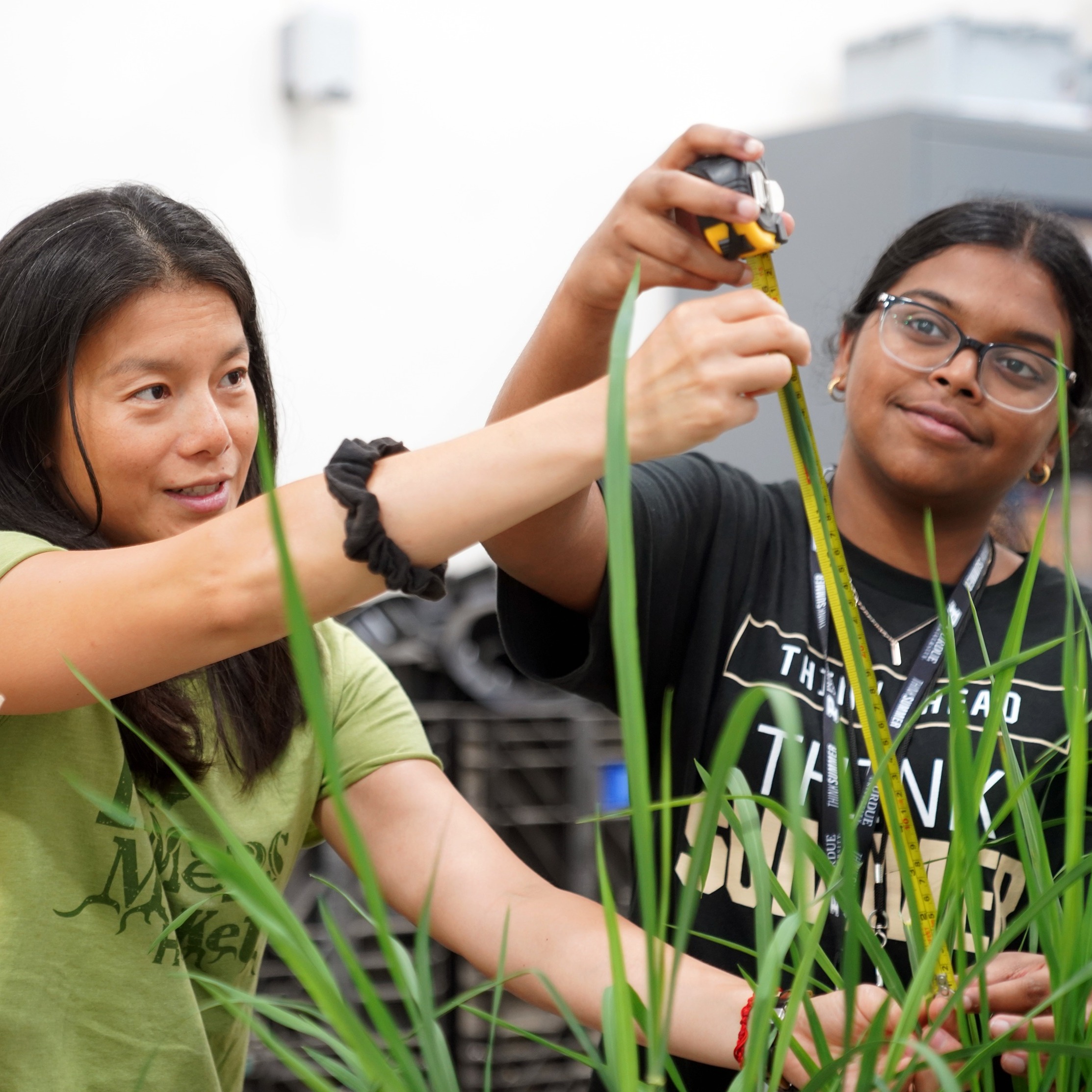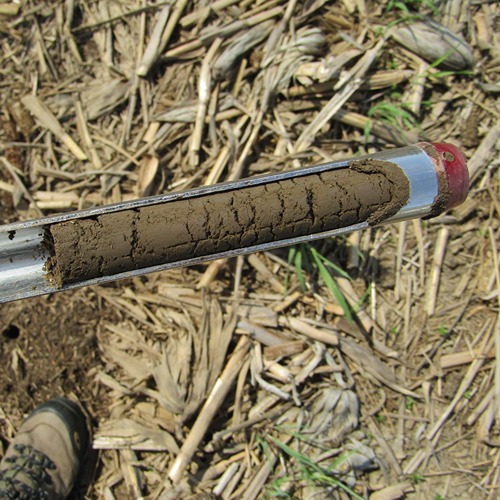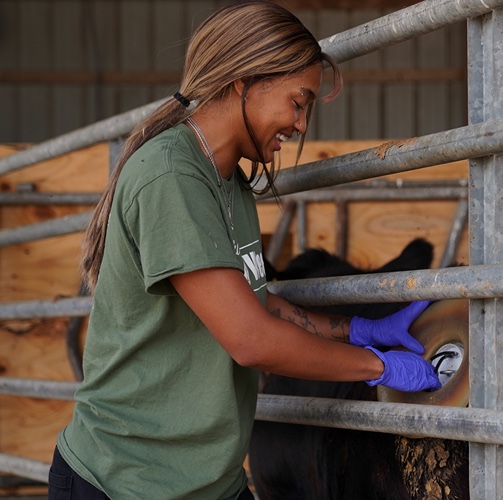Many people are involved in the remarkable range of programs, services and facilities that undergird research in the College of Agriculture. Collectively they’re integral to the college fulfilling its research mission. “Behind the Research” explores their individual roles. Each academic year, we profile six people whose work supports the College of Agriculture’s global reputation for developing innovative, multidisciplinary solutions to challenges and then putting those solutions into action.
- Took on a key role in developing the Indiana Corn and Soybean Innovation Center even before the building was completed.
- Manages a facility that has become both a hub for research and a recruiting tool for Purdue Agriculture and Purdue Engineering.
- Obtained an FAA Remote Pilot Certificate to fly drones and has started learning to process images for researchers.
Jason Adams starts each workday by checking the Indiana Corn and Soybean Innovation Center (ICSC) physical plant and the equipment that researchers have reserved for the day. “I’m an equipment junkie, and Purdue has given me a lot to take care of,” he says.
ICSC’s facility manager grew up on a small grain farm in Parke County, Indiana, and chose Purdue for undergraduate study because of its strong programs in agriculture: “They taught the things I was interested in,” he explains. Before he graduated with a BS in agronomy in 1998, he’d completed an internship with a seed company, which sparked his interest in plant breeding. He then spent 17 years in soybean breeding with Monsanto in Oxford, Indiana.
The work suited his personality, he says: “I’m a very competitive person. Our job was to put out varieties, and I wanted to put out more varieties than other facilities.”
When his company consolidated its breeding program, Adams decided to change jobs to stay close to home and signed on with his alma mater. He got the keys to Purdue’s new Indiana Corn and Soybean Innovation Center in April 2016, and began unpacking equipment and supplies and putting everything in working order before the ribbon-cutting ceremony in August. “Being here at the very beginning has given me a great feeling of ownership of the facility,” he says.
Today ICSC is fully operational — one of the nation’s first and largest field phenotyping facilities — and Adams manages the 25,500-square-foot building. Purdue researchers from the colleges of Agriculture and Engineering have come to depend on the ICSC facility, with nearly 40 labs now using the shared space.
In addition to handling maintenance and equipment reservations, Adams does farm work for labs that don’t have technicians. “I also train the new undergraduate and graduate students on how to run the equipment safely,” he adds.
He also serves as backup pilot for flying unmanned aerial vehicles (UAVs) on the farm and intends to continue improving those skills. “In my last career I started using UAVs a little, and I never thought it would go anywhere,” he says. “When I came to Purdue it became an integral part of my job.”
“Another thing I do here quite a bit is to give tours,” he adds. More than 6,000 people from the U.S. and all over the world have come through ICSC. “This building is a good recruiting tool for potential students and faculty,” Adams says. “I’ve given many tours to high school students where Purdue may not have been on their radar. Or perhaps they may not have realized how much technology is involved in agriculture careers. Many times you can see the surprise in their eyes of what Purdue and agriculture have to offer.”
Adams especially likes working with Purdue students and tracking their progress as professionals. “I’ve had students who came through here who are plant breeders, agronomists and district sales managers now,” he says. “I’m proud of training the next generation.”
Adams contributes to research and graduate education efforts in the College of Agriculture by providing continuity at a resource important to Purdue researchers. “I see myself as a steady fixture for the labs that use ICSC,” he says. “In the academic setting there is a lot of turnover in the labs in terms of undergraduate and graduate students. I try to help pass the knowledge of the equipment and the facility from one group to the next.”





